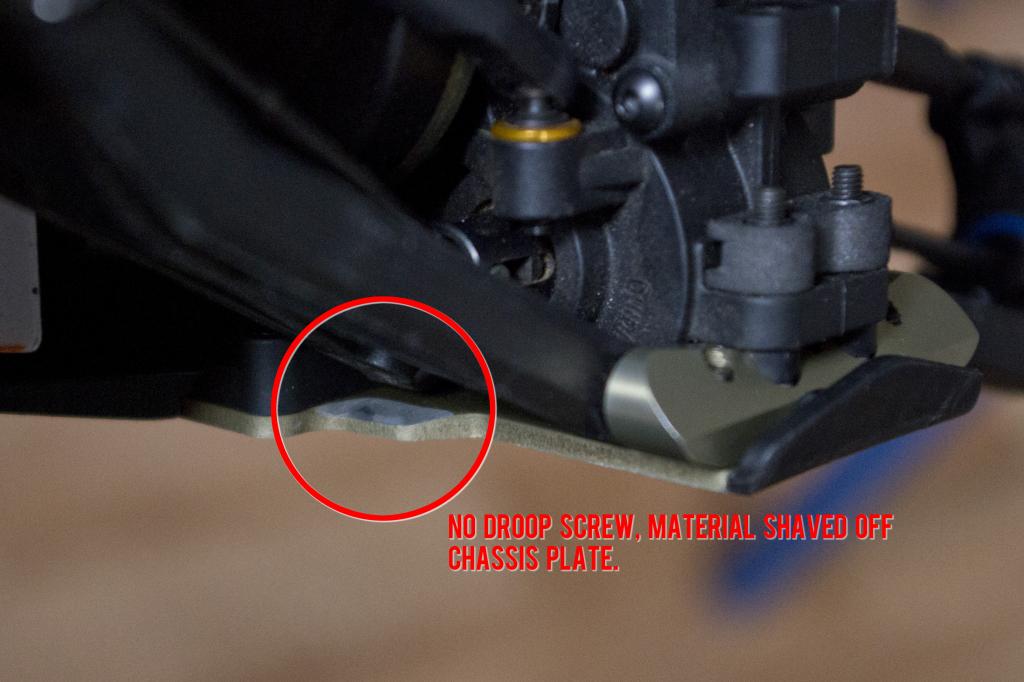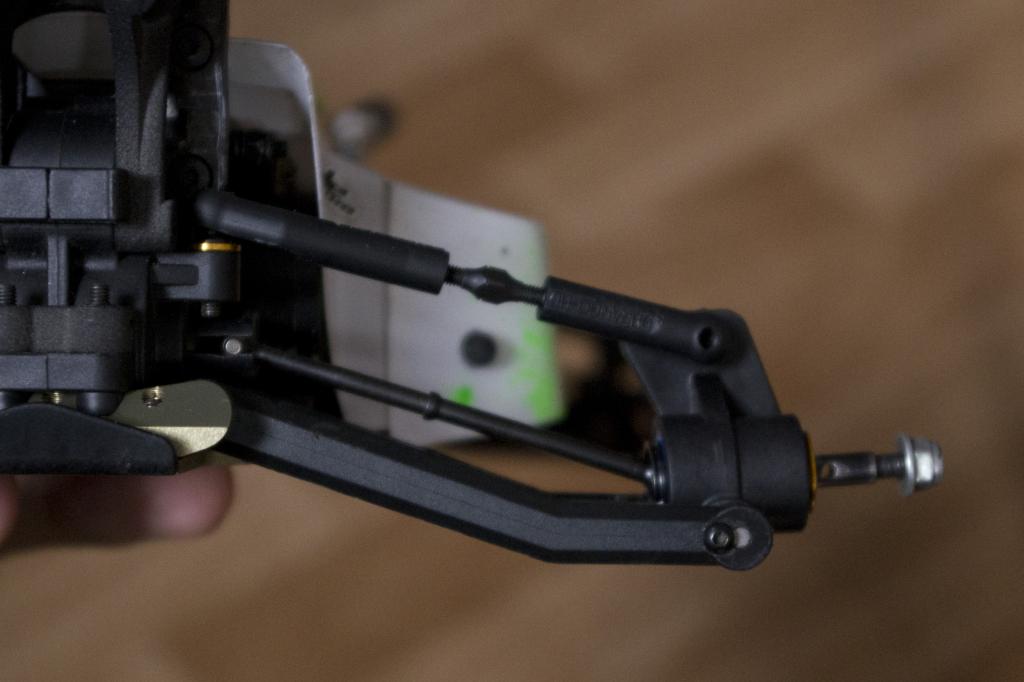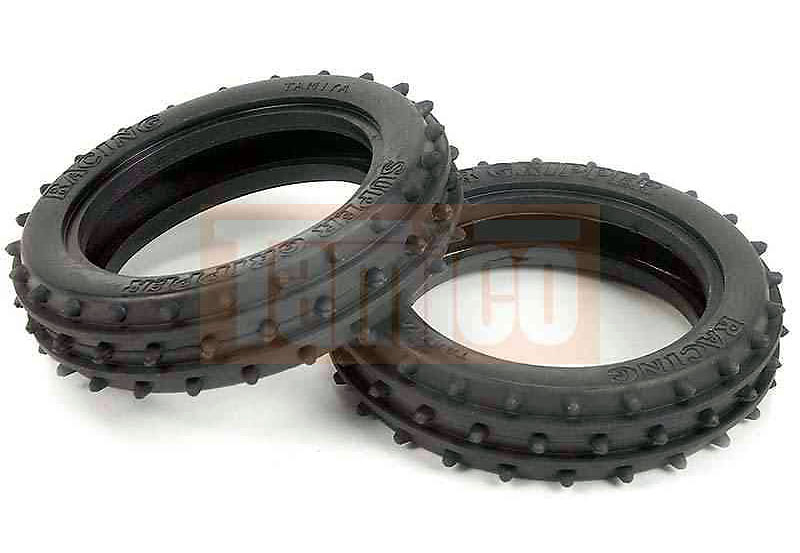|
- Team Durango DEX210 - Paul Dijkstra - Winter Champioship - Vlijmen - 12.01.2014 -
PDF File

Here you go. Some details about the car+setup:
- The increased rear droop is achieved by filing off part of the droop screw stoppers on the chassis, or cutting them off alltogether.


- My chassis/electronics layout uses a shorty in the back with the ESC in front of it.


- Tire-wise, tread is more important than compound on truly loose dirt... Hence why I can get away with running somewhat different brands/compounds between front and rear.
- For rear tires, I used dBoots Multibytes this time around. In the past, I also used Losi Step Pin tires with great results, and Tamiya's 'Spire Spike' tires may do well too. Some people use Schumacher Full spikes, but they tend to create so much forward traction you get on-power understeer, and the huge spikes tend to make the car oversteer off-power.
- For front tires, I used Tamiya Super Hornet Front Tires. I haven't tried other tires yet, but you need something that's not too agressive, yet digs in a bit: A mild form of spikes or deep ribs - I haven't tried it yet, but cut staggers might work too.

The car as described in the setup sheet for me is a nice start. The car was easy to drive, it remained nicely flat and stable over the big holes and bumps and I could turn it sideways under braking at the end of the straight without losing control. I think the mid-motor layout plays a big role in this balanced feel: No overhanging motor to bottom out on the bumps, and the neutral weight balance that listens better to steering input and less to the direction that the majority of the mass is heading into  A mid-motor needs more corrections to keep it going in the right direction - a rear motor is less sensitive to the smaller bumps, but once a bump sends the car in the wrong way it's near impossible to correct. A mid-motor needs more corrections to keep it going in the right direction - a rear motor is less sensitive to the smaller bumps, but once a bump sends the car in the wrong way it's near impossible to correct.
The amount of steering was good. At low speeds it seems to have a slightly bigger turning radius than other cars though I'm not clearly seeing understeer. The rear end has decent grip (forwards and sideways), but I drove the TLR 22 2.0 from a team driver after the race, and that clearly had more sideways rear bite.
I think a combination of Losi Step Pins and Low Roll Center (LRC) will do a lot, and a longer wheelbase could make the car more forgiving (making it easier to correct and enabling you to run a more agressive front end).
And then finally, some footage of what the track/surface is like:
I think the suspension setup is relevant for a rough, bumpy surface. However, as you might be able to see in the videos, the surface is really loose too: The dirt is not really compacted and therefore the tires dig into the ground. There are no pebbles rocks or gravel: It's all sand and dirt that sticks together a bit in most places on the track because it's moist.
As long as the surface is this loose, the tires we use should do well. However, the surface you described sounds more compacted and much rougher (with pebbles and rocks in it). I only have 1 1/2 years of racing experience and haven't encountered exactly the surface you described before. However, as far as my knowledge goes, on the driven wheels you'll require a low tire tread like a normal dirt/clay tire (because the tire is not meant to dig into the soil), but pretty rough and blocky so it doesn't wear too quickly. Up front I think a simple rib-tread would be the way to go
Source:
P. Dijkstra
|
